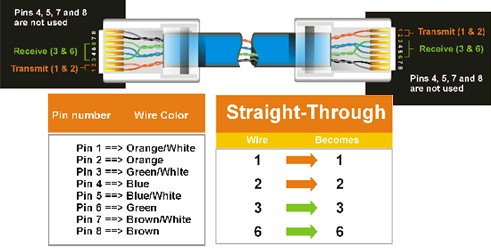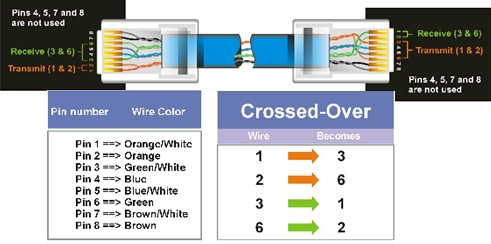Network Cabling Issues
Twisted-pair cabling, also known as 10BaseT, is
ideal for small, medium, or large networks that need flexibility and
the capacity to expand as the number of network users grows. I
highly recommend using 10BaseT cabling for its amazing flexibility and
reliability.
In a twisted-pair network, each PC has a twisted-pair
cable that runs to a centralized hub. Twisted-pair is generally more
reliable than thin coax networks because the hub is capable of correcting
data errors and improving the network's overall transmission speed and
reliability. Also known as uplinking, hubs
can be chained together for even greater expansion.
There are different grades, or categories, of twisted-pair
cabling. Category 5 is the most reliable and widely compatible. It runs
easily with 10Mbps or networks, and is required for Fast Ethernet. You
can buy Category 5 cabling that is pre-made, or you can cut & crimp
your own.
Category 5 cables can be purchased or crimped as
either straight-through or crossed. A Category 5 cable has 8 thin, color-coded
wires inside that run from one end of the cable to the other. Only wires
1, 2, 3, and 6 are used by Ethernet networks for communication. Although
only four wires are used, if the cable has 8 wires, all the wires have
to be connected in both jacks.
Straight-through cables
are used for connecting computers to a hub. Crossed
cables are used for connecting a hub to another hub, there is
an exception: some hubs have a built-in uplink port that is crossed
internally, which allows you to uplink hubs together with a straight
cable instead.
In a straight-through cable,
also known as a patch cable, wires 1, 2,
3, and 6 at one end of the cable are also wires 1, 2, 3, and 6 at the
other end. In a crossed cable, the order of the wires change from one
end to the other: wire 1 becomes 3, and 2 becomes 6.

To figure out which wire is wire number 1, hold
the cable so that the end of the plastic RJ-45 tip, (the part that goes
into a wall jack first), is facing away from you. Flip the clip so that
the copper side faces up, (the springy clip will now be parallel to
the floor). When looking down on the coppers, wire 1 will be on the
far left.
